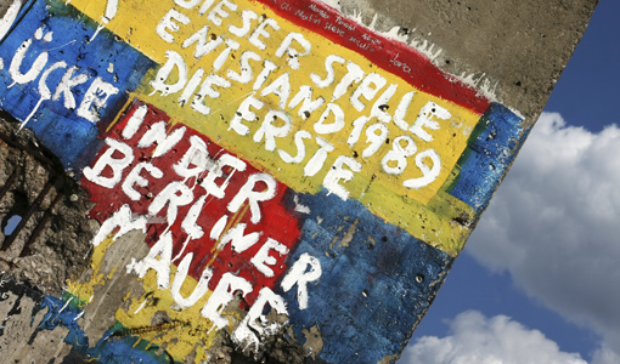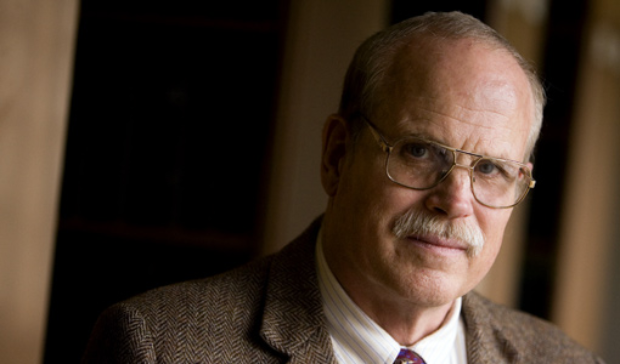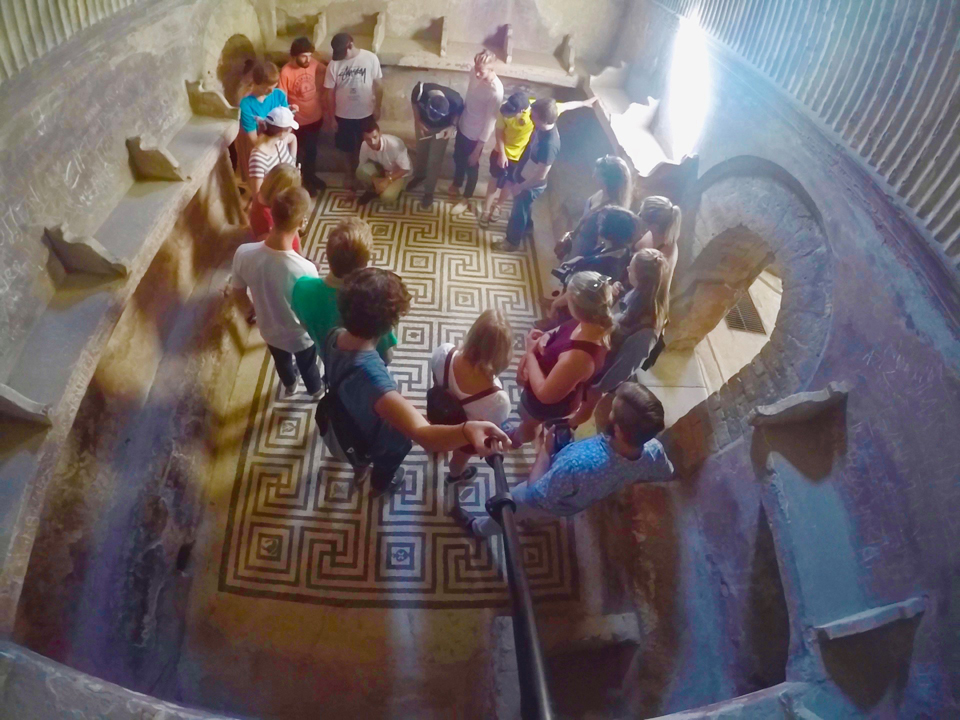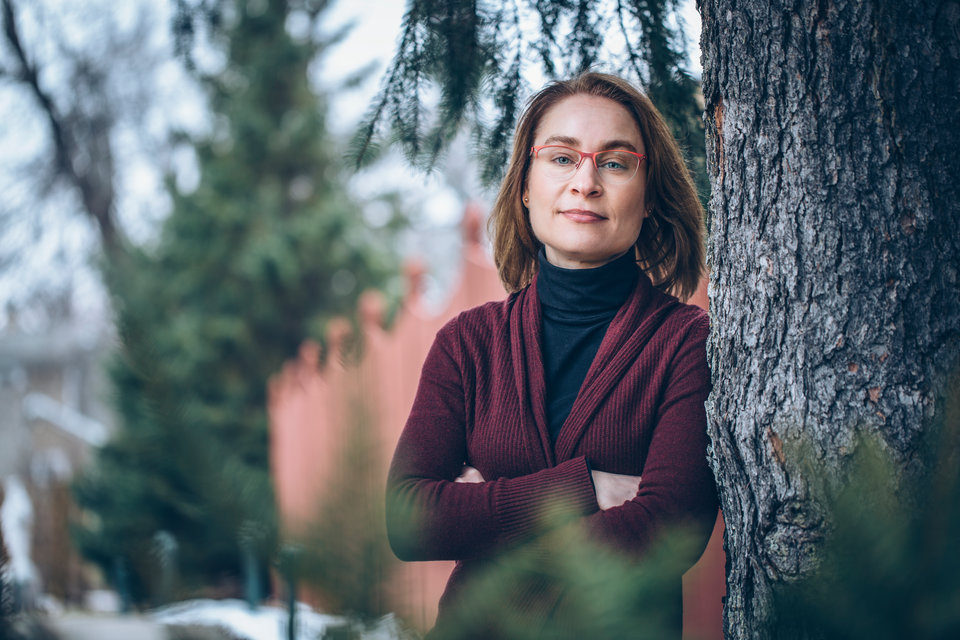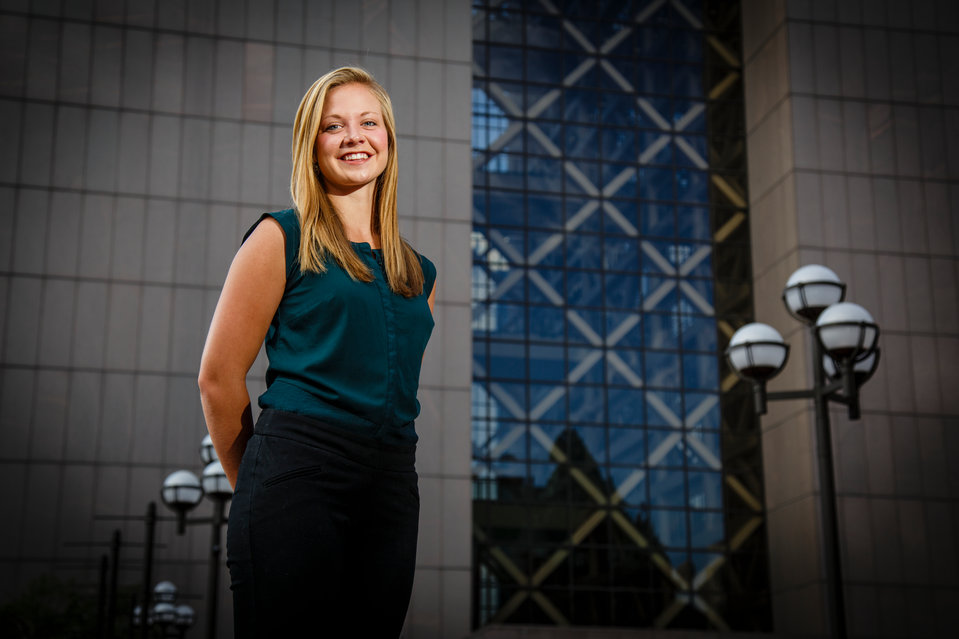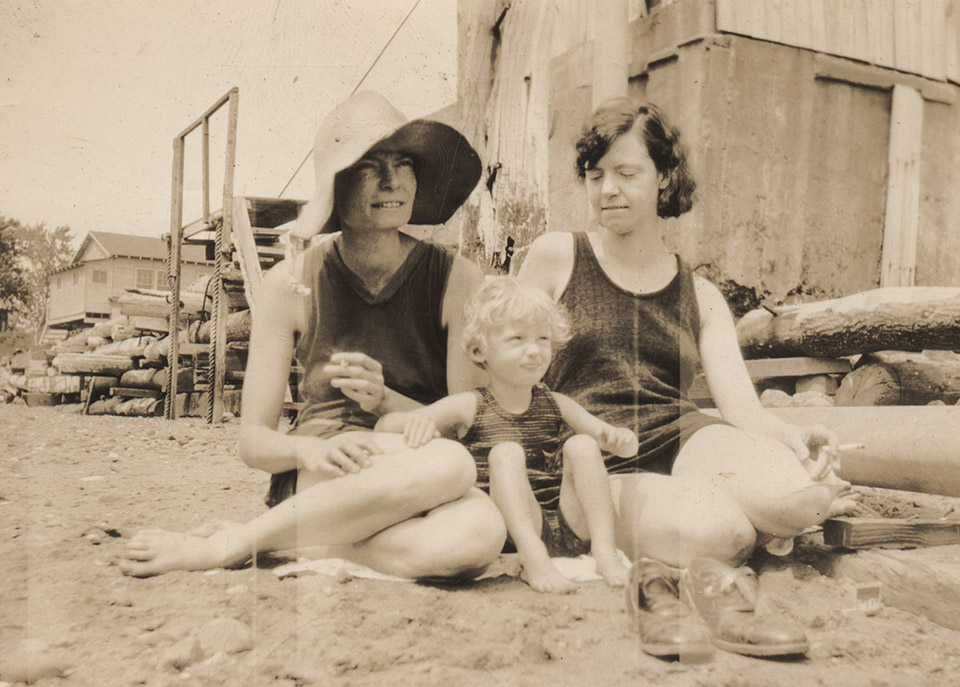The Berlin Wall became the gruesome, concrete, visible symbol of the Cold War. It divided the world into two strongly antagonistic, heavily armed camps, ready at a moment’s notice to launch into the mutually assured destruction of one another as well as, potentially, the entire planet. The wall, as part of the East-West German border, divided Berlin and the two postwar German states from the time of its construction in 1961 through its first opening again on Nov. 9, 1989. U.S. presidents traveled to the wall to assure the people of Berlin and West Germany of its solidarity with them. The most noted statements of that solidarity were coined by John F. Kennedy on June 26, 1963, “Ich bin ein Berliner” (“I am part of Berlin”), and by Ronald Reagan on June 12, 1987, “Mr. Gorbachev, tear down this wall!”
Before 1961: Millions flee from East Germany
The armed border was designated by East German officials as a defensive barrier against aggression from the West. In reality, it was a prison wall holding in the eastern population. From the end of World War II through the construction of the wall in 1961, 3.5 million East Germans had fled their homes to the West. That amounted to 20 percent of the nation’s entire population. Those who left included in large numbers the educated, the talented, the religious, the imaginative and the productive members of the society. The effect was a “bleeding to death” of East German society and economy. President Kennedy in his speech in Berlin said, “Freedom has many difficulties and democracy is not perfect, but we have never had to put a wall up to keep our people in.”
1970: Crossing the border
My personal experience of the impact of the imprisonment came in 1970 during the height of the Cold War, when as a young (and probably rather foolhardy) St. Thomas instructor I decided I had to visit and experience East Germany. I went across the border without benefit of any group or organized program. The process of passing through the wall and securing the needed visa was cumbersome but not overly difficult. The full impact of the meaning of the wall for an individual came at the point of leaving again. After 10 days of traveling to East German cities, I returned to the crossing point, was directed to a large waiting room and was instructed to slip my passport into a mail slot for processing. As I sat and waited, gazing alternately at the wall outside the window and my watch, I was struck powerfully by the fact that I was without a passport and quite alone in a country which was a declared enemy of the United States. I was at the mercy of a government with no respect for individual liberty. People had been shot trying to leave this land.
After a tense hour, my passport was returned and I was permitted to leave. I returned to the West with a newfound appreciation of the freedoms we have and the respect for human life, human dignity and privacy we take for granted. I felt a new sense of compassion for those citizens in a captive nation, who had been impounded for 10 years already at that time and would need to wait more than 20 years before they could experience the independence which I was enjoying after re-entering West Berlin.
During my time in the East, I observed many things that were remarkable in contrast to our life in the West. One was the evident suspicion with which people reacted to each other at nearly every encounter. I was struck by hearing a profound silence in crowds and seeing a furtive look of apprehension in conversations. We in the West learned later that the East German secret police, the Stasi, were not only themselves omnipresent but also used a massive number of civilian informants recruited through threats, coercion, promises of favors, job pressure or, in some cases, dedication to the communist cause. It has been estimated that more than one in 10 East German civilians was reporting to the police on any suspicious statements or activities of their co-workers, friends, neighbors and family members. Even children were employed to report on their parents and teachers. University students were pressured into reporting on fellow students and faculty.
Fall 1989: With a hammer and chisel in my hand
My next direct encounter with the wall was, with hammer and chisel in hand, participating in the popular destruction of the divisive structure. During the fall semester of 1989, I held an appointment as visiting professor at the University of Paderborn in West Germany, while on leave from St. Thomas. On the evening news, we had been learning of the massive protests in East Germany and the thousands of people fleeing the country to Czechoslovakia and Hungary. We were quite unprepared, though, for the sudden opening of the border in Berlin. During the evening of Nov. 9, thousands of East Germans poured through the openings of the wall – their first opportunity since Aug. 13, 1961.
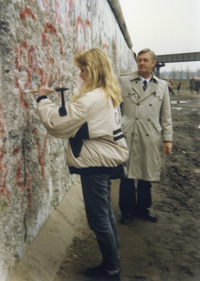 As soon as possible my wife, Nancy, and our 16-year-old daughter, Suzanne, and I boarded a train for Berlin to participate in the euphoria permeating the city. We joined the masses chipping away at the wall and anticipating the end of 40 years of isolation and imprisonment. The East German guards on the train ride through East German territory were no longer the gruff, antagonistic, scowling communist guardians of a few weeks earlier but rather were cordial, courteous … and smiling! At the wall we were amazed to see East and West German border guards engaged in friendly conversation over and through what had previously been an impenetrable barrier. Countless numbers of easterners were now passing through the wall and driving far into West Germany in their little “Trabbis” (the East German automobile, officially known as “Trabant”), seeing supermarkets for the first time, experiencing a limitless supply of consumer goods, exulting in the freedom to travel and seeing the attractions of the West they had known only by surreptitiously watching West German television.
As soon as possible my wife, Nancy, and our 16-year-old daughter, Suzanne, and I boarded a train for Berlin to participate in the euphoria permeating the city. We joined the masses chipping away at the wall and anticipating the end of 40 years of isolation and imprisonment. The East German guards on the train ride through East German territory were no longer the gruff, antagonistic, scowling communist guardians of a few weeks earlier but rather were cordial, courteous … and smiling! At the wall we were amazed to see East and West German border guards engaged in friendly conversation over and through what had previously been an impenetrable barrier. Countless numbers of easterners were now passing through the wall and driving far into West Germany in their little “Trabbis” (the East German automobile, officially known as “Trabant”), seeing supermarkets for the first time, experiencing a limitless supply of consumer goods, exulting in the freedom to travel and seeing the attractions of the West they had known only by surreptitiously watching West German television.
The courageous flights to Czechoslovakia and Hungary by thousands of East German citizens along with the protest marches had had their effect. The government in East Germany had been sufficiently weakened so that the long-time leader of the country, Erich Honecker, had been forced to resign on Oct. 18, 1989, and was replaced by the hardliner Egon Krenz. Under pressure from the protesting population and due to a certain degree of confusion, travel to West Berlin was allowed starting on that historic night in an attempt to appease the populace. The opening of the wall resulted not in the calming of the eastern population but rather in the rapid further deterioration of government authority and the successive end of the German Democratic Republic, as the eastern German state had been named.
1990: Fear of another Tiananmen Square massacre
Several months later, shortly after the reunification of the two German states, when I was invited as a lecturer to the University of Leipzig, I experienced firsthand the personal impact of the anti-government demonstrations. The demonstrations in the East had started in Leipzig in September 1989 and then spread to other cities. In Leipzig the demonstrations continued every Monday evening, starting in the Church of St. Nikolai and then spilling into the square near the university where thousands joined in, marching and chanting slogans challenging the government.
In lecture halls and classrooms, as I interacted with very polite, eager and often shy students, I felt a strong sense of respect for them, the very same young people who had shown such remarkable intensity and courage only months before in the Monday demonstrations. They had been fully aware that the demonstrations in China earlier that year had resulted in the massacre at Tiananmen Square in which the military had brutally intervened, resulting in 2,500 deaths and thousands wounded. They had been fully aware that their own government was allied with and supported the actions in China.
There had been military preparations in Leipzig as the demonstrations grew in intensity and size in 1989. Many were convinced that it was only a matter of time before the East German military would follow the Chinese example in dealing with protesters. Many said a (potential) last goodbye to friends and family before going to the demonstrations. On Oct. 9, 1989, the stage was set for a catastrophe as 100,000 took to the streets once again. Due to a number of factors, however, the military did not open fire, and in Leipzig, as in East Germany as a whole, the revolution proceeded and ended without violence.
On Nov. 9, 1989, the wall in Berlin was opened. Free elections were held on March 18, 1990, and the ruling party, the Socialist Unity Party, lost its majority. On Oct. 3, 1990, East Germany joined and was assimilated into the unified Federal Republic of Germany. In 1991, the German parliament voted to establish the capital of the new republic in its historic location in Berlin. (During the Cold War, the West German capital was located in Bonn.)
2009: 20th-Anniversary Celebration
During the early ’90s, I returned several times to lecture at the University of Leipzig and the University of Freiberg in the east, as a participant in integrating easternuniversities into the united 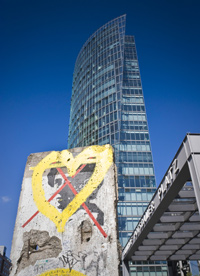 German university system, and I took great pleasure in working with students at those universities.
German university system, and I took great pleasure in working with students at those universities.
During the first week of November, I will be pleased to support and join with students at the University of St. Thomas in a project organized by our German Club in remembrance and celebration of the 20th anniversary of the opening and end of the Berlin Wall and in remembrance of the courage and determination of East Germans whose personal risks and actions succeeded in bringing about a new way of life. The event, “Freedom Without Walls,” is part of a national program in this anniversary year and is supported by the German Embassy in Washington, D.C.
Celebrating Freedom Without Walls by Meran Kreibich '11, St. Thomas German Club president
"This wall will fall. Beliefs become reality." This spray-painted quite caught President Ronald Regan's attention when he first gazed upon the Berlin Wall in 1987. The 20th anniversary of the fall of the Berlin Wall will be celebrated November 2-9 on the University of St. Thomas campus and all over the world.
The German Embassy in Washington, D.C., has created a national celebration, Freedom Without Walls, designed specifically for college campuses. St. Thomas is one of only 30 universities nationally and the only Minnesota institution to receive a grant from the embassy, thanks to Paul Schons, Modern and Classical Languages Department.
The Freedom Without Walls Celebration at St. Thomas will be sponsored by the German Club. Activities will include a re-creation of the Berlin Wall, a gala and a YouTube contest in which students can create videos impersonating speeches made by world leaders at the time of the fall of the wall.
The gala, with a traditional German meal and remarks by people who were affected by the fall of the wall, will be held at the Germanic-American Institute, 301 Summit Avenue, St. Paul. The gala is open to the public.
The German Club aims to connect this historical anniversary event to the present -day issues through education and celebration. As Reagan said, "We welcome change and openness, for we believe that freedom and security go together, that the advance of human liberty can only strengthen the cause of world peace."
For more information about these events, visit the Facebook sire for "Freedom Without Walls" and search "events, " or send an e-mail to mgkreibich@stthomas.edu.
Read more from CAS Spotlight
